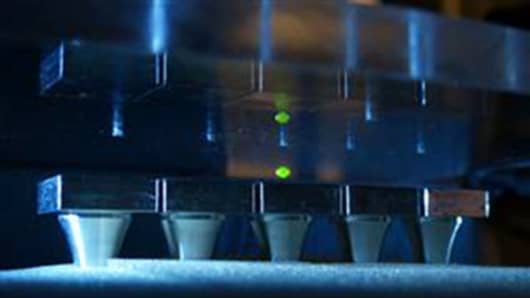It looks like "Harry Potter" magic, but it's just acoustic levitation: Researchers have created a device that uses sound waves to make liquid droplets and small solid objects float in the air and merge into each other on command.
The ultrasonic chessboard could someday be used for delicate chemical or pharmaceutical processes where contamination from a surface could spoil the reaction, said Dimos Poulikakos, an engineer at Switzerland's ETH Zurich. He is the senior author of a paper on the project appearing in the Proceedings of the National Academy of Sciences.
"Levitation is an old story," Poulikakos told NBC News. "It was really discovered 100 years ago."
What's new about the device that he and his colleagues constructed is that it uses a chessboard-like array of levitating devices to transport objects through the air with ultrasound. The research team made droplets of water and hydrocarbons float around the squares of the array and smash into one another.
Poulikakos said the method also worked on bits of instant coffee, a bubbling fleck of sodium, tiny steel balls and a wooden toothpick (which looked as if it was being twirled by an occult hand).



